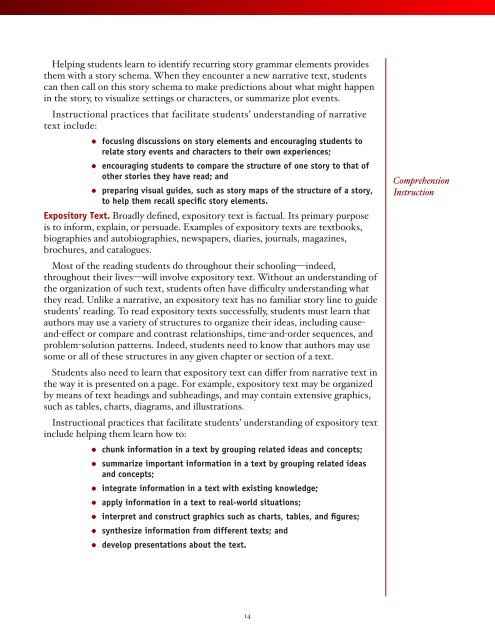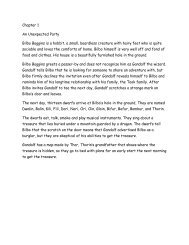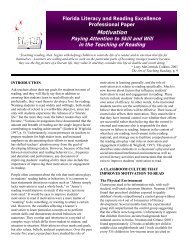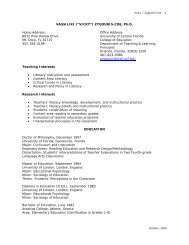compliance statement
compliance statement
compliance statement
You also want an ePaper? Increase the reach of your titles
YUMPU automatically turns print PDFs into web optimized ePapers that Google loves.
Helping students learn to identify recurring story grammar elements provides<br />
them with a story schema. When they encounter a new narrative text, students<br />
can then call on this story schema to make predictions about what might happen<br />
in the story, to visualize settings or characters, or summarize plot events.<br />
Instructional practices that facilitate students’ understanding of narrative<br />
text include:<br />
• focusing discussions on story elements and encouraging students to<br />
relate story events and characters to their own experiences;<br />
• encouraging students to compare the structure of one story to that of<br />
other stories they have read; and<br />
• preparing visual guides, such as story maps of the structure of a story,<br />
to help them recall specific story elements.<br />
Expository Text. Broadly defined, expository text is factual. Its primary purpose<br />
is to inform, explain, or persuade. Examples of expository texts are textbooks,<br />
biographies and autobiographies, newspapers, diaries, journals, magazines,<br />
brochures, and catalogues.<br />
Most of the reading students do throughout their schooling—indeed,<br />
throughout their lives—will involve expository text. Without an understanding of<br />
the organization of such text, students often have difficulty understanding what<br />
they read. Unlike a narrative, an expository text has no familiar story line to guide<br />
students’ reading. To read expository texts successfully, students must learn that<br />
authors may use a variety of structures to organize their ideas, including causeand-effect<br />
or compare and contrast relationships, time-and-order sequences, and<br />
problem-solution patterns. Indeed, students need to know that authors may use<br />
some or all of these structures in any given chapter or section of a text.<br />
Students also need to learn that expository text can differ from narrative text in<br />
the way it is presented on a page. For example, expository text may be organized<br />
by means of text headings and subheadings, and may contain extensive graphics,<br />
such as tables, charts, diagrams, and illustrations.<br />
Instructional practices that facilitate students’ understanding of expository text<br />
include helping them learn how to:<br />
• chunk information in a text by grouping related ideas and concepts;<br />
• summarize important information in a text by grouping related ideas<br />
and concepts;<br />
• integrate information in a text with existing knowledge;<br />
• apply information in a text to real-world situations;<br />
• interpret and construct graphics such as charts, tables, and figures;<br />
• synthesize information from different texts; and<br />
• develop presentations about the text.<br />
14<br />
Comprehension<br />
Instruction







